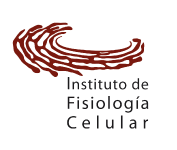CUP-1 is a novel protein involved in dietary cholesterol uptake in caenorhabditis elegans
Valdes, V. J., Athie, A., Salinas, L. S., Navarro, R. E., & Vaca, L. (2012). CUP-1 Is a Novel Protein Involved in Dietary Cholesterol Uptake in Caenorhabditis elegans. PLoS ONE, 7(3), e33962. doi:10.1371/journal.pone.0033962
Sterols transport and distribution are essential processes in all multicellular organisms. Survival of the nematode Caenorhabditis elegans depends on dietary absorption of sterols present in the environment. However the general mechanisms associated to sterol uptake in nematodes are poorly understood. In the present work we provide evidence showing that a previously uncharacterized transmembrane protein, designated Cholesterol Uptake Protein-1 (CUP-1), is involved in dietary cholesterol uptake in C. elegans. Animals lacking CUP-1 showed hypersensitivity to cholesterol limitation and were unable to uptake cholesterol. A CUP-1-GFP fusion protein colocalized with cholesterol-rich vesicles, endosomes and lysosomes as well as the plasma membrane. Additionally, by FRET imaging, a direct interaction was found between the cholesterol analog DHE and the transmembrane "cholesterol recognition/interaction amino acid consensus" (CRAC) motif present in C. elegans CUP-1. In-silico analysis identified two mammalian homologues of CUP-1. Most interestingly, CRAC motifs are conserved in mammalian CUP-1 homologous. Our results suggest a role of CUP-1 in cholesterol uptake in C. elegans and open up the possibility for the existence of a new class of proteins involved in sterol absorption in mammals.




